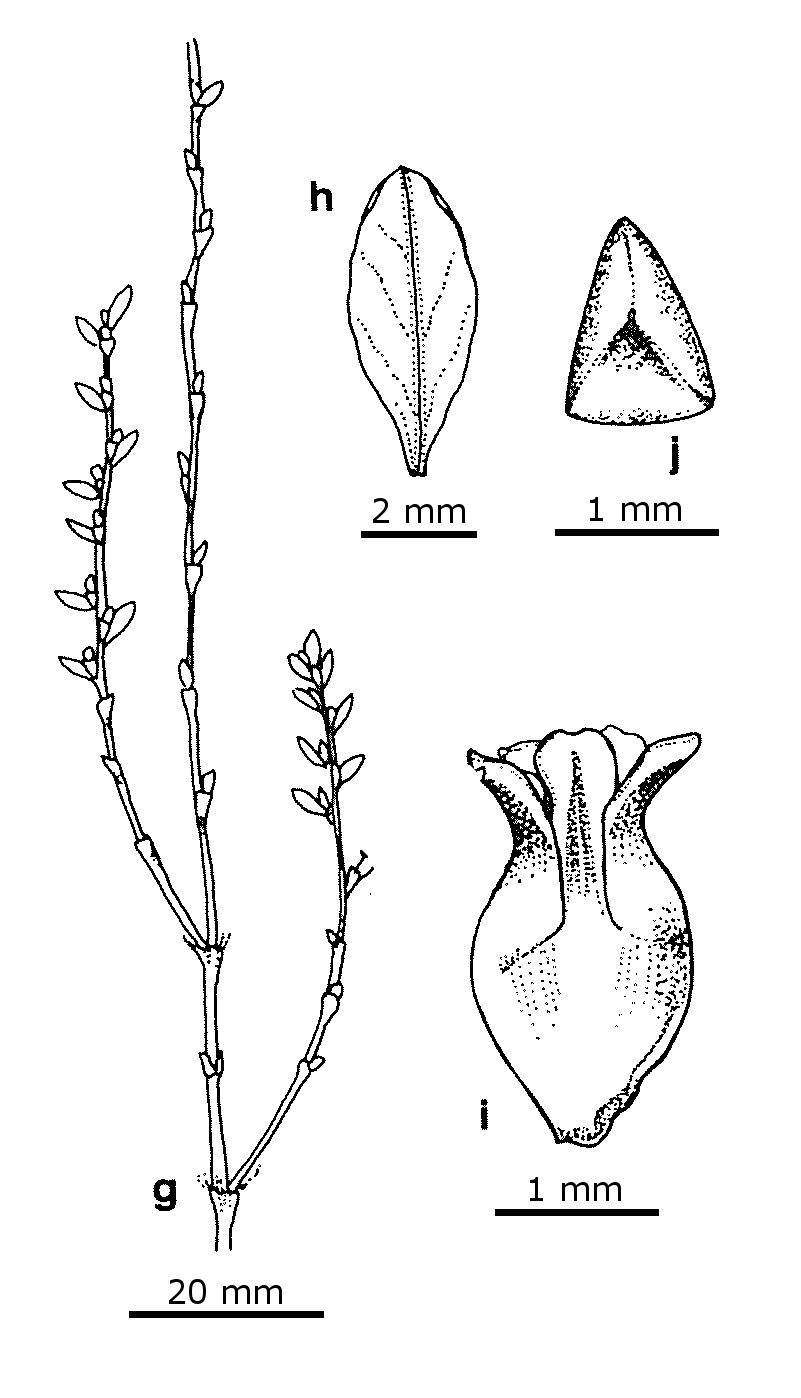Polygonum arenastrum
Jord. ex Boreau HogweedDecumbent or prostrate, often mat-forming, annual, to c. 1.5 m diam. Ochreas 3–10 mm long, soon disintegrating. Leaves narrowly elliptic, 5–20 mm long, 2–5 mm wide, sometimes the lower leaves deciduous, margins flat or undulate, rarely slightly recurved, lateral veins more or less obvious. Flowers 1–3 in axillary clusters; perianth 2–3 mm long, the segments united for c. half their length, greenish with pink or white margins. Fruiting perianth not or barely enlarged. Nut with 2 equal flat or convex faces, and a narrower concave face, 2–2.5 mm long, mid to dark brown, minutely roughened. Flowers mostly summer.
Wim, VVP, VRiv, RobP, MuF, GipP, OtP, WaP, Gold, CVU, DunT, NIS, EGU, HSF, HNF, Strz, VAlp. Also WA, SA, Qld, NSW, ACT, Tas. Native almost throughout Europe. An occasional weed of bare open ground (including cracks in pavements, roadsides, fallow paddocks etc.) mostly on compacted or heavier soils.
Formerly confused with Polygonum aviculare.
Walsh, N.G. (1996). Polygonaceae. In: Walsh, N.G.; Entwisle, T.J., Flora of Victoria Vol. 3, Dicotyledons Winteraceae to Myrtaceae, pp. 272–295. Inkata Press, Melbourne.
 Spinning
Spinning



